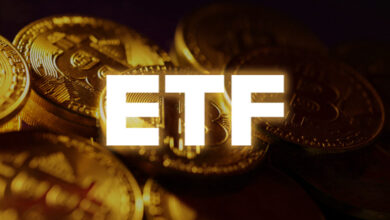Bitcoin Falls Below $70,000 Amid Mixed U.S. Jobs Report and ECB Rate Cut

Bitcoin experienced a significant decline late Friday, falling below US$70,000 due to a combination of a mixed U.S. jobs report and a rate cut by the European Central Bank (ECB). Initially challenging $72,000 earlier in the day, Bitcoin’s price retreated in U.S. trading hours, eventually settling at $69,000 according to CoinGecko, marking a 2.5% drop within 24 hours.
The U.S. Bureau of Labor Statistics report disclosed a dual-edged economic scenario: an increase in job creation with 272,000 jobs added in May, which was stronger than expected, alongside a rise in the unemployment rate to 4%. This seemingly dashed hopes for an imminent interest rate cut by the Federal Reserve, sending interest rates and the dollar sharply higher.
While job growth indicated economic strength, the rise in unemployment and consistent weekly hours worked hinted at deeper economic issues. Additionally, average hourly earnings rose by 0.4% in May and saw a 4.1% year-over-year increase, yet the pace of aggregate weekly payroll growth in the private sector decelerated compared to the previous year.
The ECB’s decision to lower its benchmark lending rate from 4% to 3.75%, the first reduction in five years, is expected to enhance liquidity and potentially increase the appeal of alternative assets such as Bitcoin. This decision, alongside positive institutional inflows into U.S. spot Bitcoin ETFs, which saw over US$1.54 billion in net inflows this week, might influence Bitcoin’s short-term performance. Despite these positive factors, Bitcoin’s price fell, leading to $450 million in liquidations, the largest amount since a mid-April washout.
Meanwhile, Bitcoin bulls might be left puzzled about what is needed for a true upside breakout. The spot ETFs completed their 18th consecutive day of inflows on Thursday, a streak not even achieved during the frenzied price increases of February and March. Over this period, ETFs accumulated more than 56,000 Bitcoins, nearly seven times the amount mined during that time, according to HODL Capital.
This complex interplay of economic indicators, central bank policies, and market dynamics continues to shape Bitcoin’s price trajectory, leaving investors to speculate on its future movement.





